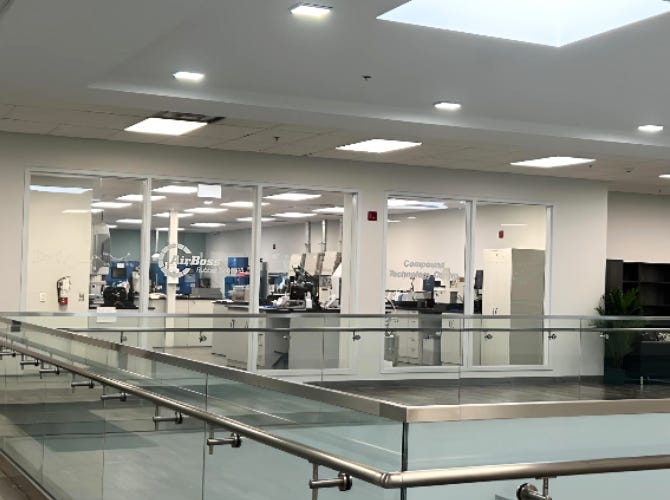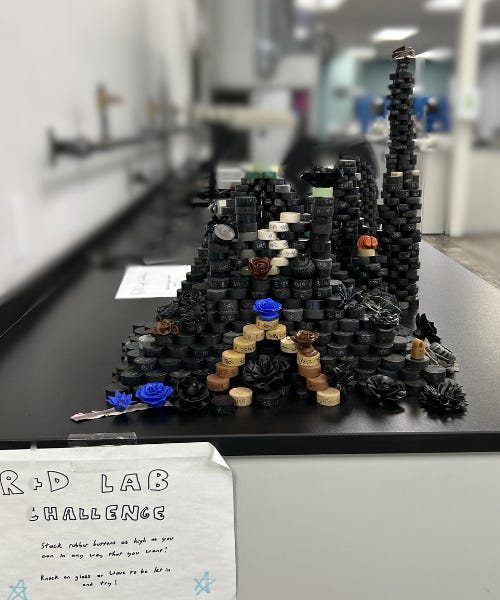May & June24: Mini Maglevs & Designing Rubber @AirBoss
Updates from May, June and part of July '24
Hey I’m Julia! I’m in love with fast mobility tech atm. I’m building Maglev motors for one day working hyperloop tech (maglev in low-pressure tubes).



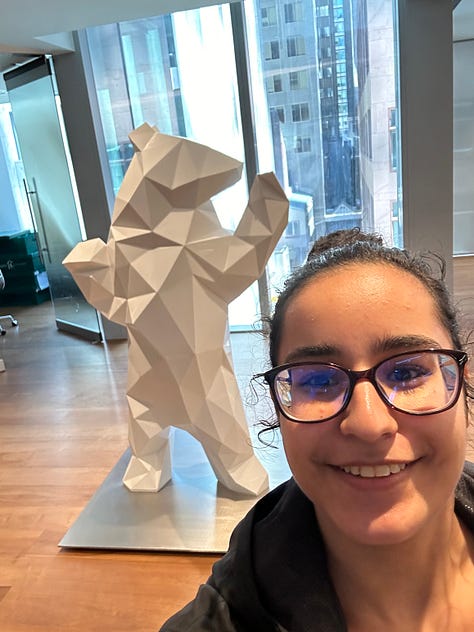
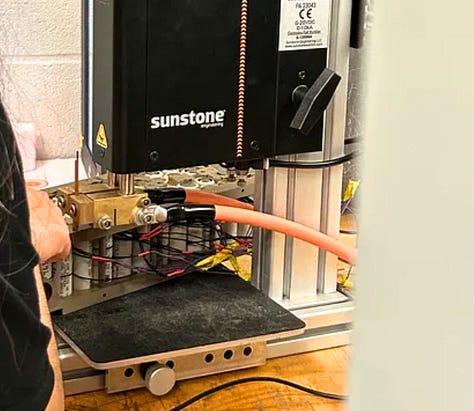
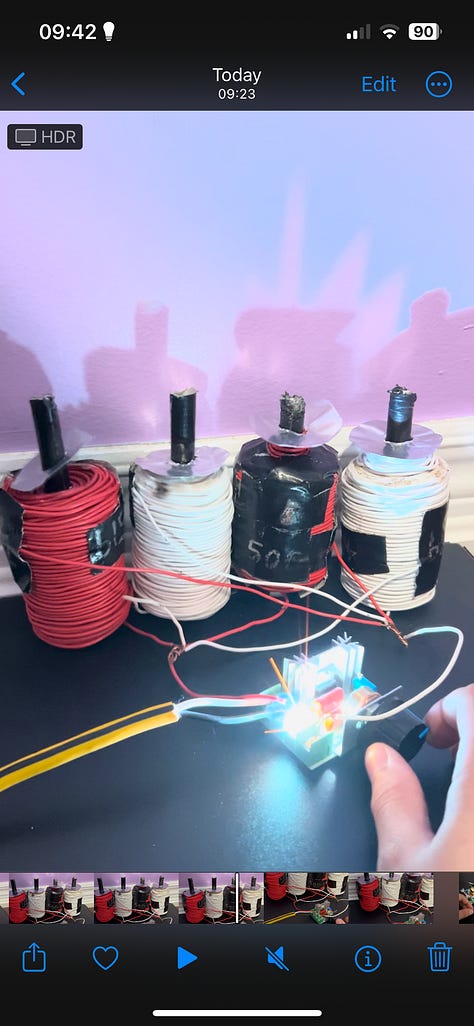
Stuff in this update
posting daily #bip posts on levitating aluminum foil to stay accountable in building small Maglev models & finishing the TKS activate program
getting some phone freedom: More on my year goal of mastering my time by taking a little break from my phone & taking on a new lifestyle with work
rubber update from halfway through 4 months working at AirBoss custom rubber compounding R&D lab
We have levitation people!
I finally got this copper coil to lift up something over a centimetre!!!



For most of the year (& last year), I’ve been trying to build a working linear induction motor (LIM), to one day levitate hyperloops. And… 3 weeks into May I actually did it!
Starting from complete scratch, (after 5 months of super limited progress) I went back to electromagnetism basics and worked through levitation from first principles. That’s how I got to this point of building just the induction coils with a metal stick in them. No fancy stands, metal cores, or plates, just copper wire and foil.
Now I’m regrouping ideas, to try and figure out exactly how I did it.
I did >30 trials, but only 3 produced some lift. Most of the fails resulted in lots of burnt wires and power regulators. So, now I am individually (very tediously) testing all my circuit parts to see what is still salvageable and figure out how to control the electricity in the coils so I don’t keep getting massive short circuits.
A video is coming out in maybe 2 weeks!
I finished 2 full years at The Knowledge Society (TKS). 2 years ago, I’d just finished grade 11 and had no idea what to do with my life, so I went to do co-op at the university I’m studying now! Some things I’ve gotten since then:
Finding my direction, drive, and desire
Critical thinking & self-awareness are a shield from the pull of conformity
and many more
Mastering my time: Freedom from tech
For the past 2 months, I’ve been adjusting to a new working lifestyle which meant a lifestyle of less time for myself.
A huge part of mastering my time has been figuring out how to keep myself going when I don’t get to have the usual hour of running in the mornings, or no quiet thinking times at lunch/after school.
Plus, I’ve been learning how to make use of shorter free time, 30 minutes at a time (bus transfers, lunch breaks, etc.) instead of the hours I had in school. This last one is still a work in progress, but some ways I’ve been keeping my mind active in a sometimes boring work and commuting day are:
listening to the How to Take Over the World podcast. My favourite episode is about the Wright brothers.
reading The Bear by Andrew Krivak - Love it so far! It takes some persistence to get through the first 20-ish pages. I’m almost halfway through.
listening to violin & admiring the trees on my 2-hour work commutes: These commutes were TORTURE at the beginning of May and June. But, I recently turned my phone on greyscale and as a result, the world seems more exciting and colourful than glueing my eyes to social media which I’ve been loving.
Rubber Testing @AirBoss
May & June were the first two months of my first university co-op job as an R&D technician at AirBoss in the compounding R&D centre. (Compounding is combining raw rubber and additives to get final rubbers with properties like elasticity, colours, etc.)
I spend most of my day running to 6 machines like the one below to test custom and extrude rubber samples for customers like automotive, and defence (PPE) companies for products like rubber car seals, gloves, and boots.


I thought rubber was one of the most boring places I could have ended up spending my time on. It’s smelly, old and so I didn’t think there would be much innovation happening here. Here are some cool things I learned so far:
Rubber R&D takes SO long: there’s a big process to rubber that I was oblivious to in May, so much more beyond a quick mix and bake that I thought rubber was. These people have their noses to the lab benches searching for crazy tiny grains, bubbles, and undispersed material in samples from mixing that would have huge consequences on car seals for example. (plus, my boss, Joy, is probably the most detail-obsessed & dedicated person I’ve ever met. So grateful to her & her books!)
Crazy detailed lab work at industry scale: I’ve worked in many nanomaterial labs for the past 2-ish years and doing lab work on tiny nanoparticles that I couldn’t see or feel—took a HUGE patience.
But the lab work AirBoss does for (extremely picky) customers is beyond what I thought could be done really successfully, really quickly. Largely, it is the time is money mindset, and the many safety layers in place to catch mistakes like increasing global supplier mistakes (beautifully, systems > discipline). This hard, super detailed work, on a MASSIVE scale, has amazed me since day 1.
Some cool projects going on here now are making sustainable rubber with animal poo, silicon rubber (a HUGE pain to clean, but great for making flowers), and generally optimizing rubber to have less expensive ingredients, faster curing, or longer-lasting properties (in heat, oil, water, acid, etc.).
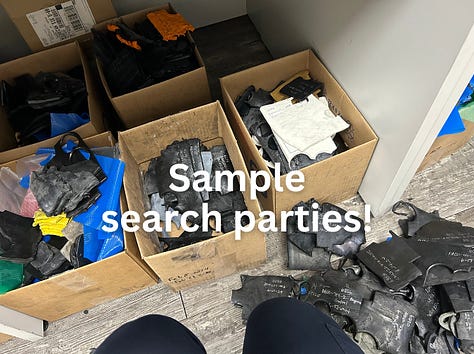
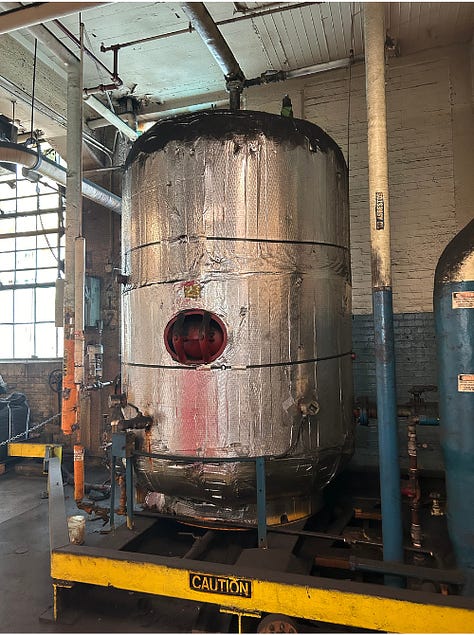
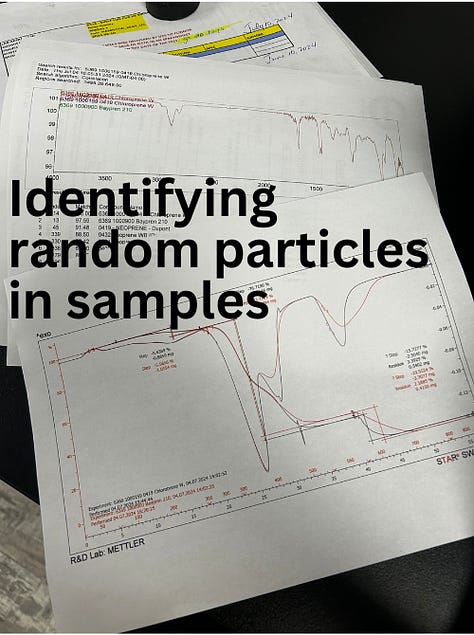


In my downtime, waiting for machines to run, I make rubber flowers. Here is the garden so far, and expanding:
A question I’ve been thinking about 💭
A big part of industrialization and scaling up of manufacturing companies has become automation, asking more of “how can I automate to be more efficient with less labour?” Should industrialization of manufacturing in our new world of AI, computation, etc. continue putting more emphasis on workflow computer automation with less human supervision?
One thing I was not expecting to get into at AirBoss was learning about the workflows of big companies, their consequences, and all the opinions people can have about them. Mixing rubber is a huge part of the entire process, and now it largely relies on computer-generated graphs to monitor progress.
How can we be sure it’s an accurate measure from the computer? (temperature, added material, cross-contamination, etc.)
How can we be sure it is mixed enough to break down particles that may be seen in the final batches?
Should attention be placed evenly on the mixing process, and post-mixing inspection?
These are some ideas I’m looking forward to learning about for the rest of the summer. ☀️
Into the future: July & August
Some things I’ll be up to before August ends are:
preparing to start my 2nd year of uni strong in September
more project updates on my LIMs & levitating tech 🧲
learning more about how to make better rubber and what it takes to have efficiency in rubber manufacturing
on the search for the next co-op internship; abroad this time?? 🌍
See you in August with more rubber flowers, coils, and whatever beautiful chaos comes with that. 👋


